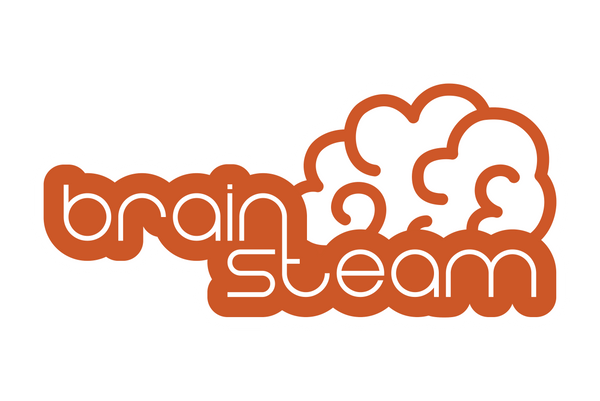Introduction to STEM Education
In today’s fast-paced technological landscape, STEM (Science, Technology, Engineering, and Mathematics) education has emerged as a cornerstone for preparing the next generation. It fosters problem-solving, critical thinking, and creativity, essential skills for success in the modern world.
Importance of STEM Education for Elementary Schoolers
STEM education goes beyond memorizing facts; it cultivates a mindset of curiosity and exploration. For elementary schoolers, introducing STEM at an early age lays the foundation for lifelong learning and discovery in an increasingly technology-driven society.
Benefits of Engaging in STEM Activities at Home
Bringing STEM activities into the home environment enhances learning by fostering a sense of ownership and experimentation. It creates a positive attitude towards challenges and provides a relaxed atmosphere for exploration.
Choosing the Right Tech Activities for Elementary Schoolers
Importance of Age-Appropriate Activities: Tailoring activities to the child's age ensures engagement and comprehension. For example, younger children might enjoy coding games like "Scratch Jr." or "Kodable," while older children might prefer more complex challenges like building and programming robots.
Considering Interests and Learning Styles: Understanding a child's interests helps in selecting engaging activities. For instance, if a child is fascinated by nature, interactive science experiments exploring plant growth or weather patterns could be captivating. Alternatively, for the artistic mind, activities combining STEM with art, such as creating digital animations or designing 3D models, could be particularly engaging.
Top STEM Tech Activities for Elementary Schoolers
- Coding and Programming Games: Platforms like "Scratch Jr." and "Kodable" offer visual interfaces to teach coding concepts through play. Children can create their own games, animations, and stories while learning problem-solving and logical thinking.
- Interactive Science Experiments: Websites like "Mystery Science" provide step-by-step guides for hands-on experiments using household items. For instance, children can create a baking soda and vinegar volcano to learn about chemical reactions or build a homemade barometer to understand weather patterns.
- Engineering Challenges with Building Kits: Kits like LEGO Education's "Simple Machines" teach engineering concepts and enhance fine motor skills. Children can construct their own machines and explore principles like gears, levers, and pulleys.
- Virtual Field Trips and Educational Apps: Platforms such as "Google Expeditions" offer virtual exploration of ecosystems and historical landmarks. Educational apps like "Duolingo ABC" blend technology with learning, enhancing literacy skills through interactive activities and games.
Setting Up a STEM Learning Environment at Home
- Designating a Tech-Friendly Space: Create a dedicated area equipped with age-appropriate gadgets and resources. For example, set up a desk with a computer or tablet, coding books, building kits, and other STEM-related materials.
- Establishing a Routine for STEM Activities: Consistent exposure to STEM activities builds a strong foundation over time. Schedule regular time slots for STEM exploration, such as a coding session after school or a science experiment on weekends.
Incorporating STEM Learning into Daily Life
Utilizing Everyday Objects for Experiments: Simple tasks like baking or creating DIY experiments using household items provide educational opportunities. For example, measuring ingredients during baking can teach children about ratios and fractions, while creating a DIY water cycle using jars and water demonstrates concepts of evaporation and condensation.
Encouraging Problem-Solving Skills: Presenting challenges that require critical thinking fosters problem-solving skills. For instance, task children with designing a bridge using paper and tape that can support the weight of small objects, encouraging experimentation and iteration.
Engaging Parents in STEM Education
Providing Resources and Support: Websites like "NASA's STEM Activities" offer resources for parents to effectively guide their child's learning. Parents can access easy-to-follow guides and informative articles to support their child's STEM journey.
Participating in STEM Activities Together: Family engagement creates a collaborative learning environment and strengthens familial bonds. For example, building a robot together or conducting a family science experiment not only enhances learning but also creates lasting memories.
Challenges and Solutions in Implementing STEM at Home
Overcoming Technological Barriers: Not all families have access to the latest technology. In such cases, offline alternatives like science-themed board games or DIY experiments can offer valuable learning experiences without relying on digital devices.
Addressing Time Constraints and Parental Involvement: Integrating STEM into daily routines and involving extended family members spreads the responsibility. For example, parents can encourage grandparents or siblings to participate in STEM activities, making it a shared experience and alleviating time constraints.
Monitoring Progress and Celebrating Achievements
Tracking Learning Outcomes: Recognizing achievements and milestones motivates continued interest in STEM. Parents can keep track of their child's progress by noting accomplishments such as completing a coding level or successfully conducting a science experiment.
Recognizing Growth and Innovation: Celebrating not only the final results but also the process fosters a positive attitude towards learning. Parents can highlight instances where their child demonstrated innovation, creativity, or perseverance, recognizing the journey as well as the destination.
Conclusion
Empower your child to explore the fascinating world of STEM through fun and educational tech activities that ignite curiosity, creativity, and a lifelong love for learning.
FAQs:
Q: What age group is suitable for these STEM activities?
A: These STEM activities are tailored for elementary schoolers, typically ranging from kindergarten to fifth grade, but can be adapted to suit younger or older children depending on their interests and abilities.
Q: Do I need prior experience or expertise in STEM to facilitate these activities?
Q: Are these activities safe for children to do independently?
Q: How can I integrate these STEM activities into my child's daily routine?
Q: What are the benefits of incorporating STEM learning into a child's education?
Q: How can I assess my child's progress and understanding of STEM concepts?

